Glossary of Terms
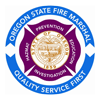
AHJ: Authority Having Jurisdiction. AHJs are normally local fire marshals. They are in charge of approval of fire protection systems, oversee installation start-ups, and ensure periodic inspection & testing of systems.
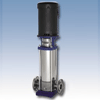
Booster/Jockey Pump: An auxiliary pump used to maintain system pressure without starting the main pump. These pumps are not designed to keep up with full system demand, their only function is system pressure maintenance.
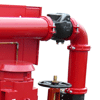
City By-Pass: A fire pump system piping configuration which allows water from the city supply to by-pass the fire pump and feed the sprinkler system. Used as a back-up while the fire pump is under maintenance, in case of power failure, or in conjunction with an FDC to ensure at least some water makes it to the sprinklers. The intent of a bypass is to provide some fire protection in the case of pump system failure, or of a fire occurring while the system is shut down for maintenance.
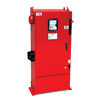
Controller, Full Service: Full service controllers are designed to comply with NFPA-20 standards. These controllers contain isolation switches, circuit breakers, over-voltage/locked-rotor/phase-reversal/phase-loss/short-circuit protection, etc. Full service controllers are available for 3-phase power only.
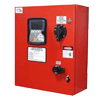
Controller, Limited Service: A controller designed specifically for low horsepower fire pump system applications. Unlike full service controllers, LSC's have no isolation switch which necessitates taking the whole system off-line in a maintenance situation. Acceptance of LSC's is dependent upon approval by the local AHJ.
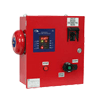
Controller, Residential: A controller designed for 230 volt, single-phase residential fire pump systems. Maximum horsepower is limited to 10 as a result of the limitations of single-phase power.
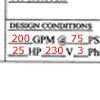
Design Condition: A fire pump's performance criteria as determined by sprinkler system demand. Pumps are rated for a certain flow in gallons per minute (GPM) at a certain pressure in either Pounds per Square Inch (PSI) or Total Dynamic Head (TDH or Head Feet) Example: 200GPM @ 75PSI
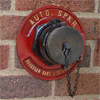
FDC: Fire Department Connection. An FDC is a connection outside of a building that connects to the discharge side of a fire pump system. In the case of fire pump or power failure the fire sprinkler system can be fed directly by a fire engine's pump system.

Flow Meter/Flow Meter Loop: A fire pump system piping configuration which allows for system testing without flowing waste water out of the system. A connection on the discharge side of the fire pump system routes water through a venturi (a flow meter) which measures the water flow, the water is then routed back to the suction side of the fire pump and circulated back through the system or back to a storage tank.
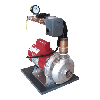
Flow Smart: Talco residential fire pumps designed specifically for systems using water storage tanks (not for booster applications). These pumps systems are based on a centrifugal end-suction pump coupled to a thermally protected single-phase AC motor.


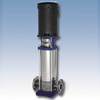
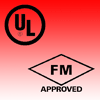
Listing/Listed: Terms indicating a component has been tested and accepted for a particular use by an officially recognized organization. UL (Underwriters Laboratories) & FM (Factory Mutual) are the principal listing organizations for fire protection equipment.
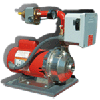
LSF: Limited Service Fire. The model name for our NFPA-13D compliant systems. These pumps systems are based on a centrifugal end-suction pump coupled to a thermally protected single-phase AC motor. Our control suite allows for manual or fully automatic operation and includes a minimum-run timer to prevent rapid-cycling.

NFPA-13D: The standard for the installation of sprinkler systems in one & two-family dwellings and manufactured homes. Covers the design and installation of automatic sprinkler systems for protection against the fire hazards. Copies of the actual code can be purchased from the NFPA here.

NFPA-13R: The standard for the installation of sprinkler systems in residential occupancies up to and including four stories in height. Covers the design and installation of automatic sprinkler systems for protection against fire hazards. Copies of the actual code can be purchased from the NFPA here.

NFPA-20: The standard for the installation of stationary pumps for fire protection. Deals with the selection and installation of pumps supplying liquid for private fire protection including liquid supplies; suction, discharge, and auxiliary equipment; power supplies, including power supply arrangements; electric drive and control; diesel engine drive and control; steam turbine drive and control; and acceptance tests and operation. Copies of the actual code can be purchased from the NFPA here.
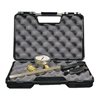
Pitot Tube: A device for measuring flow via differential pressure within a sized tube.
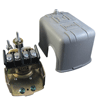
Pressure Switch: A simple control device that opens or closes an electrical circuit depending on pressure.
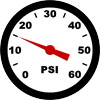
Rapid Cycle: A problem common with fire pumps that are controlled only by a pressure switch. Rapid build up and release of system pressure causes the pump to switch on and off several times a second until the pump burns up. See our 13D page.
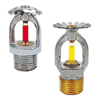
Sprinkler Head: A metered nozzle designed to deliver a diffused spray of water at a certain flow rate (in gallons per minute) to cover a certain square-footage depending on pressure.
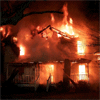
Sprinkler System Demand: The amount of water flow at a certain pressure required by the sprinkler heads for a certain amount of time. The flow and pressure components determine the fire pump and motor requirements, the time component determines water storage tank sizing (if a tank is necessary). NFPA-13D sprinkler demand is calculated by the water required to run two sprinkler heads simultaneously for 10 minutes. NFPA-13R sprinkler demand is calculated by the water required to run four sprinkler heads for thirty minutes.
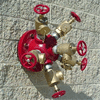
Test Port/Test Header: The most common method for testing fire system performance. The Test Port is a connection on the discharge side of a fire pump system for use in testing system performance. Water is flowed out of the system through a hose-valve-header (picture, left) and the flow is measured with a calibrated pitot tube. Periodic tests are required for both NFPA-13R & NFPA 20 systems.
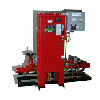
ULR: UL listed, 13R compliant. The model name for our NFPA-13R/20 compliant systems. These pump systems are based around a vertical in-line pump coupled to an AC motor. ULR systems can be configured and customized to fit almost any space constraint or job requirement.
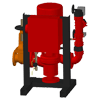
ULV: UL Listed, Vertical. The model name for our single-phase only ULR systems. These pump systems are based around a vertical in-line pump coupled to an AC motor. ULVs are designed to be more compact than our custom systems and run on standard single-phase power allowing them to be installed in locations where three-phase power is unavailable.
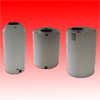
Water Storage Tank: A tank for storing water for fire protection systems. Normally required for residential systems due to flow limitations inherent in standard utility company water meters.
